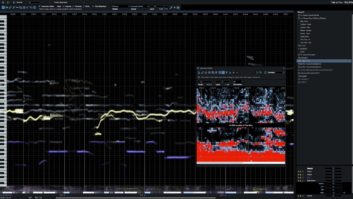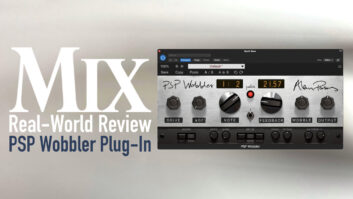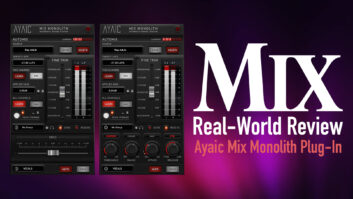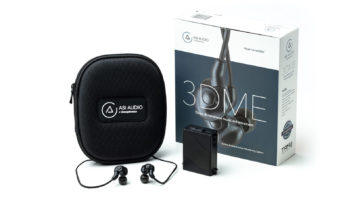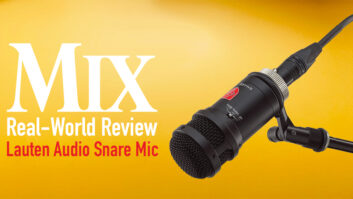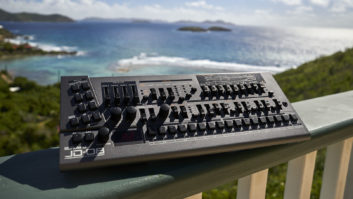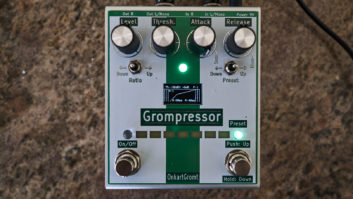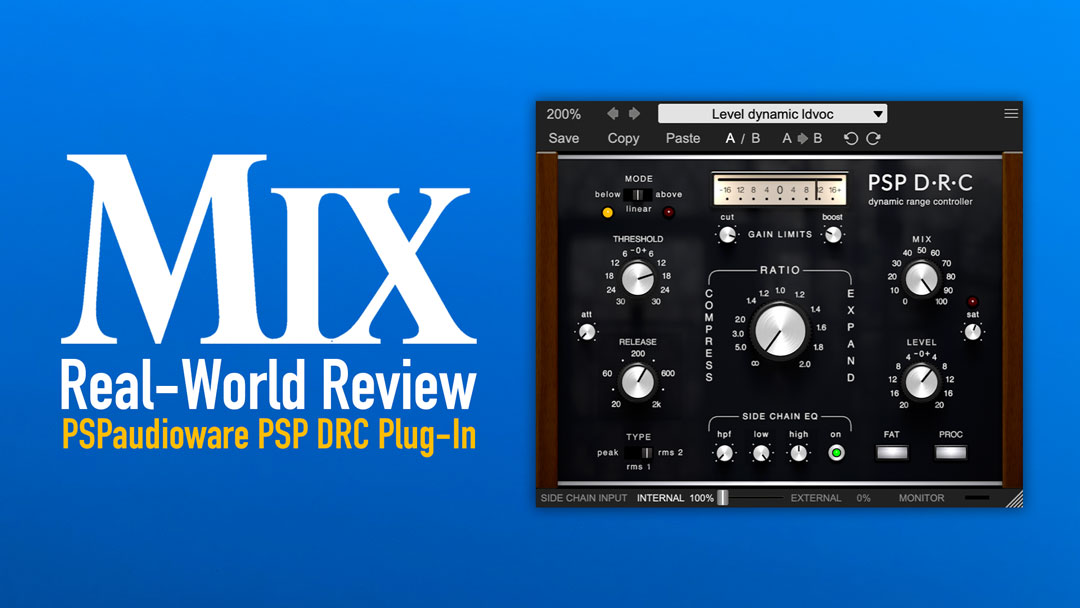
| MIX VERDICT: PSPAUDIOWARE PSP DRC |
| THE TAKEAWAY: “Even if your studio is well-stocked with dynamics processors, PSP DRC is worth its modest asking price for its unorthodox whole-range compression alone.” |
| COMPANY: PSPaudioware • www.PSPaudioware.com PRICE: $99 PROS: • Unusual whole-range compression tames knotty dynamics. • Versatile: five additional modes of dynamics processing. • Extremely useful sidechain EQ. CONS: • 1:2 is the maximum expansion ratio offered. • Saturation control lacks bypass. • Gain-change meter is somewhat inaccurate in Linear mode. |
New York, NY (October 20, 2025)—Chances are you’ve run into this problem during a mix session: The lead vocal is so dynamic, you’d have to compress it like a junkyard car crusher in order to make the quietest bits clearly audible in the mix. And while upward compression would boost the faintest phrases, peaks would still jump out too much. What’s the solution? Whole-range compression.
Whole-range compression works across the entire dynamic range, boosting audio below the threshold and attenuating it above. It’s just one of the many tools at your service in PSPaudioware’s versatile new plug-in, PSP DRC, a shorthand appellation for “dynamic range controller.”
OFFSHOOT
Inspired by the dbx 118 Dynamic Range Enhancer, PSP DRC offers six modes of operation: upward and downward compression, upward and downward expansion, and whole-range compression and expansion. Whole-range expansion attenuates signals below threshold and boosts them above, making static-level tracks come alive. Also, you can create a compander (complementary compressor and expander) by serially chaining two instances of the plug-in, using respective 2:1 and 1:2 ratios.
The Mode switch, together with the Ratio knob, set the mode of operation. If the Mode switch is set to Above and the Ratio knob is set to a value higher than 1:1 (unity gain), audio higher than your threshold setting will get downwardly compressed—what we think of when compressing tracks. Selecting Below mode and an inverse ratio (e.g., 1:2) causes downward expansion of audio below threshold, increasing dynamic range and lowering the noise floor. In Linear mode, ratio values higher than 1:1 produce whole-range compression, so all input levels that deviate from a threshold setting are adjusted to be closer to it.
In addition to the Threshold, Attack, Release, (output) Level and (dry/wet) Mix knobs, other goodies expand PSP DRC’s uses. The Type switch selects what level detection the plug-in uses: peak (best for limiting fast signal peaks) or one of two types of RMS (root mean square; used for milder or more gradual compression and expansion).
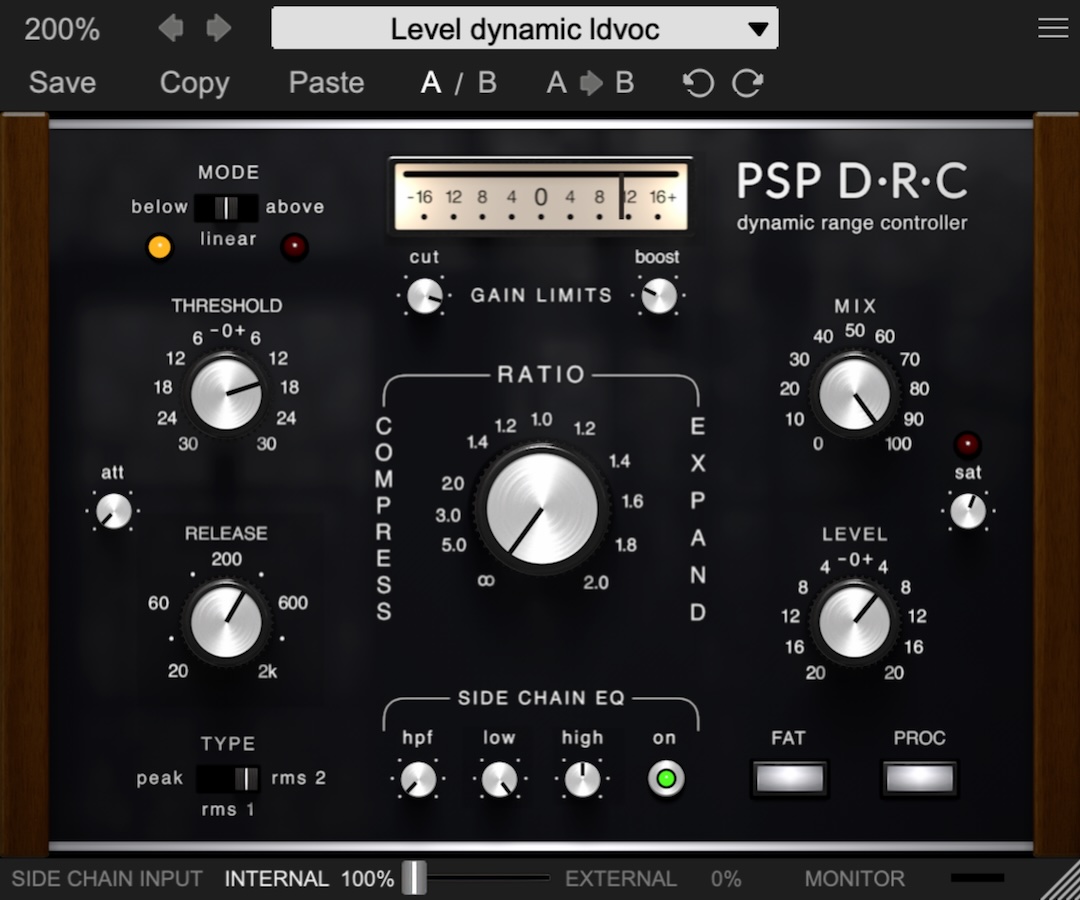
Cut and Boost knobs in the GUI’s Gain Limits section set the maximal gain change PSP DRC can apply, letting you strong-arm tracks without fear of going completely overboard. Turn the Sat(-uration) knob to add different amounts and types of saturation—from tape- and tube-like to severe, transistor-style clipping—after the Level knob’s algorithm. A gain-change meter and various LEDs keep you informed as you work.
Three knobs let you equalize PSP DRC’s sidechain signals by setting the cutoff frequency in a high-pass filter and adjusting the gain of two shelving filters operating below 100 Hz and above 4 kHz, respectively. The sidechain signal’s origin can be either internal, external (your DAW permitting) or a blend of the two, the blend adjusted by a slider at the bottom of the GUI.
Universal Audio UAD A-Type Plug-in — A Mix Real-World Review
I found it convenient that you can boost weak external sidechain signals up to 20 dB inside the plug-in. Click on the word “Monitor” in the GUI’s bottom-right corner to hear the selected sidechain signal; as a result, the GUI will turn amber to alert you that you’re no longer listening to the plug-in’s input signal. Nice touch!
Other hallmarks of excellence include PSP’s FAT (oversampling) circuit; 64-bit, double-precision internal processing; support for sampling rates up to 384 kHz; hide-able tool tips; A and B workspaces; and Undo/Redo. You can also change the GUI’s size in wholesale amounts or 5% increments. For all its intrinsic power, the GUI is elegantly simple, intuitive and easy-to-use.
ACID TEST
A very dynamic, male lead vocal posed serious challenges in a hard-rock mix, with the singer bellowing in his sonorous chest register during verses, interjecting quiet spoken phrases on the subchoruses, and belting out bright choruses. Setting PSP DRC to Linear mode and dialing in an ∞:1 ratio produced heavy whole-range compression that was the silver bullet.
Guiding my hand on the Threshold control, two signal-status LEDs alternately flashed to indicate when spoken words were below threshold and singing above. In fact, the threshold-status LEDs indicated more accurately than the gain-change meter whether gain was being boosted or cut (probably due to the latter’s VU-style response, which lagged on gain changes a bit).
With the threshold now set purposely to my desired level for unity gain, setting the Boost Gain Limit knob to 11 dB allowed quiet spoken phrases to become clearly audible without overwhelming. A -5dB Cut Gain Limit setting judiciously compressed peaks during the choruses. Boosting the sidechain’s low-shelving EQ 20 dB sensitized the plug-in to the singer’s sonorous chest register, compressing woof-y peaks during the verses.
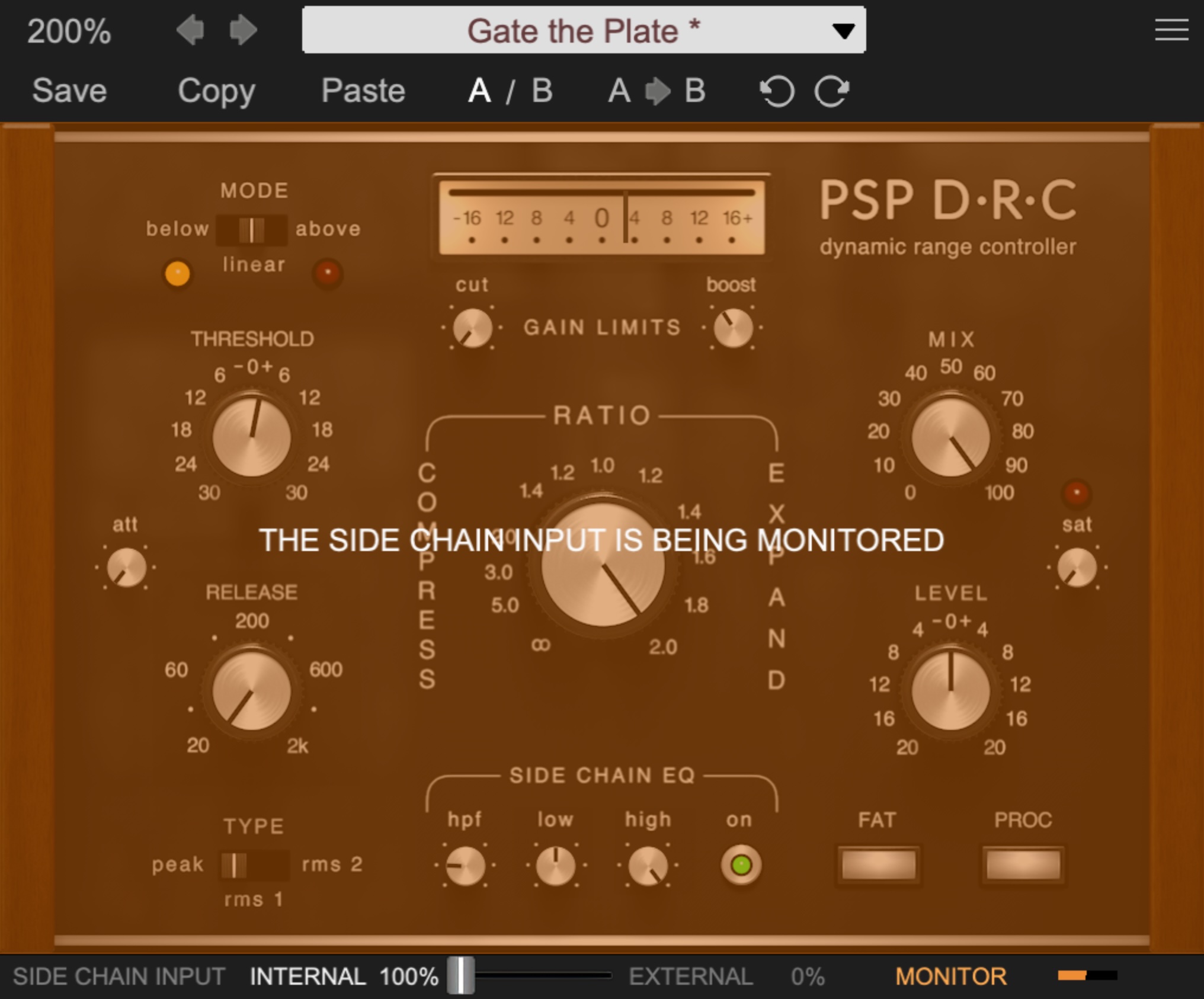
Added saturation sounded musical on this vocal, and boosting the Sat knob also helped compress peaks more; I only wish the Sat knob had a bypass control so I could quickly A/B its effect with that of the unsaturated vocal. No biggie—PSP DRC’s whole-range compression was a wonderfully effective solution to the vocal track’s multiple problems, smoothing levels throughout the song and saving me from having to program time-consuming automation.
Heavy whole-range compression sounded great on room mics for trap drums. Selecting the fastest attack and release times, peak detection, full-on saturation, very high threshold and ∞:1 ratio didn’t quite get the sound I wanted. But also cranking the sidechain’s low- and high-shelving EQ to the max did, making the room’s ambience hyperventilate and the traps pump like a jackhammer. Bingo!
I tried using upward expansion and whole-range expansion in turn on a finished mix, in order to boost its weak bass guitar and drums, but even with the release time maxed out (2 seconds), I could not avoid mild pumping artifacts. A multiband transient designer and equalizer are better tandem tools for this application.
Discover more great reviews—get a free Mix SmartBrief subscription!
However, with PSP DRC instantiated downstream from a Lexicon plate reverb plugin, whole-range expansion created some fun, 1980s-style gated reverbs. A 1:2 ratio (the highest PSP DRC offers for expansion), peak detection, and very fast attack and release times—as well as a very finely tuned send level for the reverb—were key to achieving the effect. I do wish that PSP’s plugin allowed much higher expansion ratios, as that would’ve produced much more dramatic gating.
GROUND CONTROL, MAJOR TOMS
Considering PSP DRC has no hysteresis control and its expansion ratios top out at 1:2, I was surprised at how effective the plug-in was at quelling bleed on tracks for close-miked toms. Setting the GUI for downward expansion with peak detection, the trick was to crank the sidechain EQ’s low shelf 20 dB and nosedive its high shelf -20 dB, in essence making the plugin “hear” the toms more (to open the gate) and cymbals less (attenuating between tom strikes).
There are many ways to use the versatile PSP DRC. Even if your studio is well-stocked with dynamics processors, PSP DRC is worth its modest asking price ($99) for its unorthodox whole-range compression alone.
